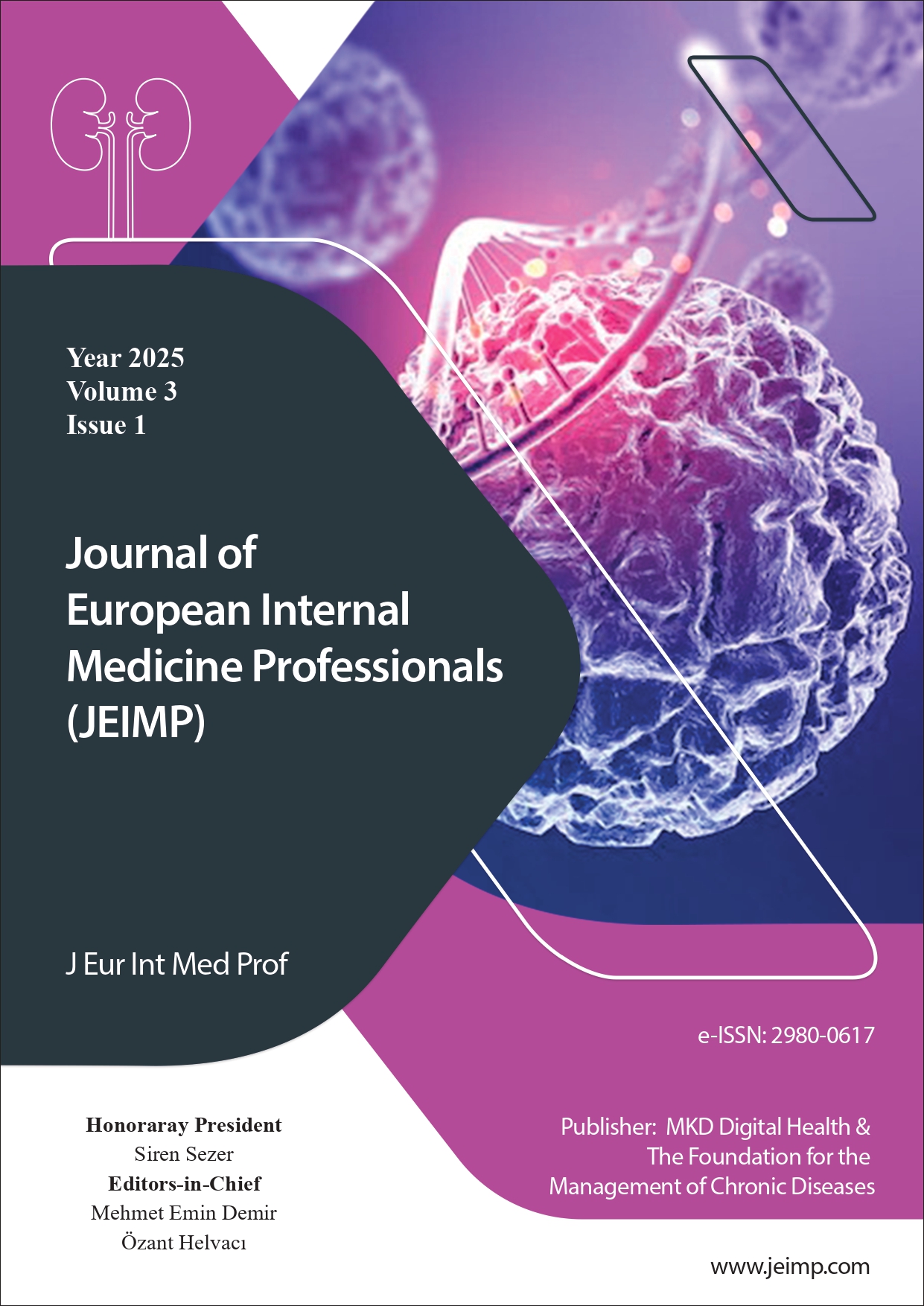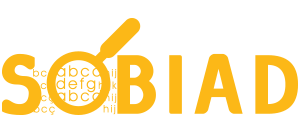The Effects of Temporomandibular Joint Mobilization on Drooling Control, Swallowing Function and Quality of Life in Cerebral Palsy Patients; Double-Blind Study
Quality of Life in Cerebral Palsy Patients
DOI:
https://doi.org/10.5281/zenodo.14742163Keywords:
Cerebral Palsy, Temporomandibular Joint Dysfunction, Swallowing, Quality of Life, MobilizationAbstract
Background: This study aimed to determine the effects of temporomandibular joint (TMJ) mobilization on saliva control, swallowing function, and quality of life in cerebral palsy (CP) patients with temporomandibular joint dysfunction (TMD).
Methods: A total of 20 patients who met the inclusion criteria and were between the ages of 1 and 18 years were included. They were then randomly divided into two groups. In the study group (n=10) patients were treated with TMJ mobilization in addition to control group treatments In the control group (n=10), patients were treated with physiotherapy, and a home program including passive joint movements was provided. The treatments were continued 2 sessions/week and 6 weeks. Patients were evaluated using the Pediatric Functional Independence Measurement (WeeFIM), the Drooling Frequency and Severity Scale (DFSS), and the Assessment of Swallowing Ability and Function (SAFE).
Results: The difference between the SAFE scale scores before and after treatment was statistically significant (p<0,05). There were negative correlations between WeeFIM, and DFSS scores; a positive correlation between drool frequency and severity scores; a negative correlation between drool severity and mandible lateral deviation values; and a negative correlation between drool frequency and mandible protrusion values.
Conclusion: As a result, it was found that temporomandibular mobilization in patients with cerebral palsy with TMD has a positive effect on saliva and swallowing functions and quality of life.
References
Nelson KB. The epidemiology of cerebral palsy in term infants. Ment Retard Dev Disabil Res Rev. 2002;8(3):146-50. https://doi.org/10.1002/mrdd.10037
Dougherty NJ. A Review of Cerebral Palsy for the Oral Health Professional. Dent Clin North Am. 2009;53(2):329-38. doi: 10.1016/j.cden.2008.12.001.
Ickenstein GW. Diagnosis and Treatment of Neurogenic Oropharyngeal Dysphagia. 2nd Edition. UNI-MED. Bremen. 2014.
Ortega AO. Guimarães AS. Ciamponi AL. Marie SK. Frequency of temporomandibular disorder signs in individuals with cerebral palsy. J Oral Rehabil. 2008;35(3):191-5. doi: 10.1111/j.1365-2842.2007.01766.x.
Duymaz T. Mobilizasyon teknikleri. Hipokrat Kitabevi. İstanbul. 2017.148-150.
Otman AS. Demirel. H. Sade A. Tedavi hareketlerinde temel değerlendirme prensipleri. Hacettepe Yayınları. Ankara. 1995.11-2.
The Uniform Data System for Medical Rehabilitation. Guide for the uniform data set for medical rehabilitation for children (WeeFIM). 6.4th edition. State University of NY at Buffalo. NY. 2016. https://www.scribd.com/document/406598012/Weefim-Clinical-Guide-pdf
Thomas-Stonell N. Greenberg J. Three treatment approaches and clinical factors in the reduction of drooling. Dysphagia. 1988;3(2):73-8. https://doi.org/10.1007/BF02412423
Logeman JA. Anatomy and physiology of normal deglutition. evaluation and treatment of swallowing disorders. 2nd Edition. Pro-ed. Texas. 1998.
McNeill C. Management of Temporomandibular Disorders: Concepts and Controversies. J Prosthet Dent. 1997;77(5):510-22. https://doi.org/10.1016/S0022-3913(97)70145-8
Bae Y. Park Y. The Effect of Relaxation Exercises for the Masticator Muscles on Temporomandibular Joint Dysfunction (TMD). J Phys Ther Sci. 2013;25(5):583-6. doi: 10.1589/jpts.25.583.
Laskin DM. Greene CS. Charles S. Hylander WL. Temporomandibular Disorders An Evidence- Based Approach to Diagnosis and Treatment. Quntessence Publishing. Chicago. 2006.
Dinçer Ü. Oğuzhan H. Kiralp M. Z. Dursun H. Temporomandibular Eklem Disfonsiyonu Sendromunda Düşük Düzey Lazer. Ultrason ve Egzersiz Tedavilerinin Etkinliğinin Karşılaştırılması. FTR Bil Der J PMR Sci. 2008;1:8-14.
Wieckiewicz M. Boening K. Wiland P. Yuh-Yuan S. Paradowska-Stolarz A. Reported concepts for the treatment modalities and pain management of temporomandibular disorders. J Headache Pain. 2015;16:106. doi: 10.1186/s10194-015-0586-5.
Purohit RR. Sheth MS. Vyas NJ. Effect of temporomandibular joint mobilization versus home exercise program on maximal mouth opening in subjects with oral submucosal fibrosis. IJTRR. 2016;5(5):48-51. doi: 10.5455/ijtrr.000000183
Erkin G. Culha C. Ozel S. Kirbiyik EG. Feeding and gastrointestinal problems in children with cerebral palsy. Int J Rehabil Res. 2010;33(3):218-24. doi: 10.1097/MRR.0b013e3283375e10.
Matthews DJ. Wilson P. Cerebral Palsy. 3rd edition. Hanley and Belfus Inc. Philadelphia.1999.
Tcheremenska AR. Use of substitute food textures for standard eating assessment in children with cerebral palsy and children without disabilities. Am J Occup Ther. 1994;48(7):626-32. https://doi.org/10.5014/ajot.48.7.626
Mathisen B. Skuse D. Wolke D. Reilly S. Oral‐motor dysfunction and failure to thrive among inner‐city infants. Dev Med Child Neurol. 1989;31(3):293-302. https://doi.org/10.1111/j.1469-8749.1989.tb03998.x
Duman Ö. Müftüoğlu İmad F. Kızılay F. Yücel İ. Balkan S. Haspolat Ş. Serebral palsili hastaların işlevsel kapasitelerine göre görme sorunlarının değerlendirilmesi. Cocuk Sag Hast Derg. 2005;48:130-135.
Novak I. Hines M. Goldsmith S. Barclay R. Clinical prognostic messages from a systematic review on cerebral palsy. Pediatrics. 2012;130(5):e1285-312. doi: 10.1542/peds.2012-0924.
Avivi-Arber L. Martin R. Lee JC. Sessle BJ. Face sensorimotor cortex and its neuroplasticity related to orofacial sensorimotor functions. Arch Oral Biol. 2011;56(12):1440-65. doi: 10.1016/j.archoralbio.2011.04.005.
Nordberg A. Miniscalco C. Lohmander A. Himmelmann K. Speech problems affect more than one in two children with cerebral palsy: Swedish population‐based study. Acta Paediatr. 2013;102(2):161-6. doi: 10.1111/apa.12076.
Stallings VA1. Charney EB. Davies JC. Cronk CE. Nutritional status and growth of children with diplegic or hemiplegic cerebral palsy. Dev Med Child Neurol. 1993;35(11):997-1006. https://doi.org/10.1111/j.1469-8749.1993.tb11582.x
Rempel G. The importance of good nutrition in children with cerebral palsy. Phys Med Rehabil Clin N Am. 2015;26(1):39-56. doi: 10.1016/j.pmr.2014.09.001.
Philpot J. Bagnall A. King C. Dubowitz V. Muntoni F. Feeding problems in merosin deficient congenital muscular dystrophy. Arch Dis Child. 1999;80(6):542-7. https://doi.org/10.1136/adc.80.6.542
Guare Rde O. Ciampioni AL. Prevalence of periodontal disease in the primary dentition of children with cerebral palsy. J Dent Child (Chic). 2004;71(1):27-32.
Manno CJ. Fox C. Eicher PS. Kerwin ME. Early oral-motor interventions for pediatric feeding problems: What. when and how. J Early Intensive Behav Interv. 2005;2(3):145-159. https://doi.org/10.1037/h0100310
Alper BS. Manno CJ. Dysphagia in infants and children with oral-motor deficits: assessment and management. Semin Speech Lang. 1996;17(4):283-310. DOI: 10.1055/s-2008-1064105
Hall KD. Pediatric dysphagia resource guide. Singular. 2001;1-45:19-155.
Fairhurst C. Cockerill H. Management of drooling in children. Arch Dis Child. 2011;96(1):25-30
Senner JE. Logemann J. Zecker S. Gaebler-Spira D. Drooling. saliva production. and swallowing in cerebral palsy. Dev Med Child Neurol. 2004;46(12):801-6.
Wright RE. Wright FR. Carson CA. Videofluoroscopic assessment in children with severe cerebral palsy presenting with dysphagia. Pediatr Radiol. 1996;26(10):720-2.
Speyer R. Cordier R. Kim JH. Cocks N. Michou E. Wilkes‐Gillan S. Prevalence of drooling. swallowing. and feeding problems in cerebral palsy across the lifespan: A systematic review and meta‐analyses. Dev Med Child Neurol. 2019;61(11):1249-1258. https://doi.org/10.1111/dmcn.14316
Rapoport A. Sublingual atropine drops for the treatment of pediatric sialorrhea. J Pain Symptom Manage. 2010;40(5):783-788.
Elhossiny F. Elattar R. ElKholy T. Mohamed F. Metwally A. Shalaby G. et al. Ultrasound-guided botulinum toxin injections of salivary glands in cerebral palsy children with sialorrhea. Bioactive Compounds in Health Dis. 2024;7(2):79-94.
Downloads
Published
How to Cite
Issue
Section
License
Copyright (c) 2025 Mehmet Sait Tangüner, Fadime Doymaz

This work is licensed under a Creative Commons Attribution 4.0 International License.










